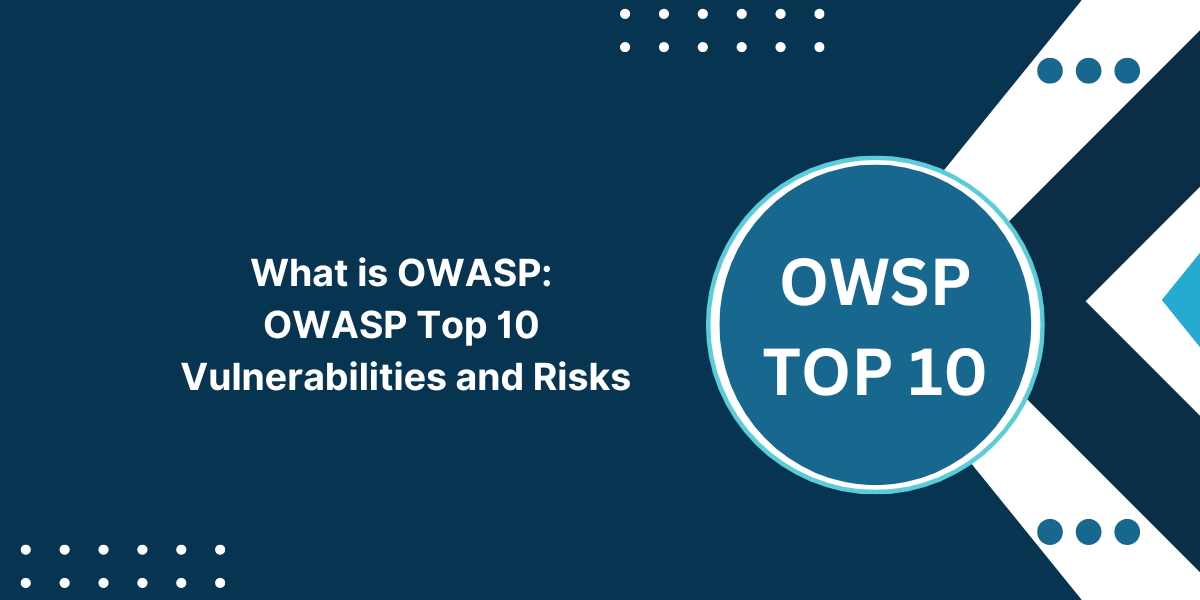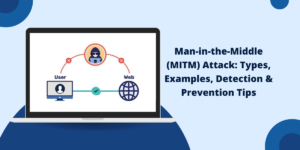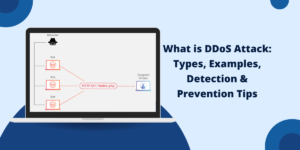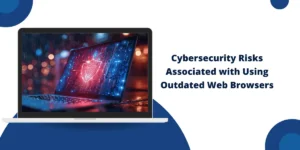What is OWASP?
The Open Web Application Security Project (OWASP Top 10) is an international, open-source, nonprofit organization focused on improving the security of software and web applications.
OWASP was founded in 2001 by Mark Curphey. Since then, OWASP has grown into a thriving community of over 200 local chapters worldwide and tens of thousands of participants.
The OWASP Foundation supports and manages OWASP projects and infrastructure. OWASP is guided by its global board of directors and local chapter leaders. All OWASP tools, documents, forums, and chapters are free and open to anyone interested in improving application security.
Key Takeaways
- OWASP is an open-source software security community that provides education, tools, documentation, and more.
- The OWASP Top 10 lists the 10 most serious web application security risks based on prevalence and impact.
- The current OWASP Top 10 (2021) focuses on vulnerabilities like broken access control, injection attacks, and improper asset management.
- OWASP offers resources like application security verification standards, security testing guides, and the dependency check tool.
- OWASP chapters worldwide provide training events, conferences, and local meetings about application security.
OWASP’s Mission and Goals
OWASP’s stated mission is to make software security visible so that organizations are able to make informed decisions about application security risks.
The OWASP Foundation pursues its mission through these primary means:
- Awareness & Education: Promoting a wider understanding of application security issues through extensive documentation, training seminars, conferences, and more.
- Open-Source Projects: Developing and maintaining an extensive collection of free and open tools and standards related to application security.
- Local Chapters: Encouraging local application security communities around the world that provide training events and meetings.
OWASP’s Core Values
OWASP is guided by these core values in everything it does:
- Open: All OWASP materials are available free of charge under an open-source license. OWASP advocates transparency about application security risks and solutions.
- Innovative: OWASP encourages fresh ideas, pioneering approaches, and unbiased reviews of tools and standards.
- Global: OWASP promotes application security awareness and solutions worldwide through its local chapters in many countries.
- Integrity: OWASP strives to be honest, dependable, and accountable in all its activities.
OWASP’s Available Resources
OWASP provides many free resources related to application security, including:
- OWASP Top 10: OWASP’s most well-known project, outlining the top 10 web application vulnerabilities.
- ASVS: The OWASP Application Security Verification Standard establishes requirements and testing guidance for secure software.
- Cheat Sheets: Cheat sheet style guides for common web security issues developers can use to build defenses.
- Testing Guide: A guide explaining different ways to test web apps for security flaws during development.
- Code Libraries: Secure application development libraries that developers can easily integrate into their projects.
- Forums & Blogs: Public discussion forums and blogs are where anyone can contribute knowledge and insights.
- Local Chapters: OWASP chapters worldwide host local meetings, trainings, conferences, and outreach efforts.
OWASP Top 10 Explained
The OWASP Top 10 is a powerful awareness document for web application security. It represents a broad consensus about the most critical security risks to web applications.
What is the OWASP Top 10?
- Released by OWASP every few years based on community data
- Prioritizes the most prevalent and impactful web app security risks
- Concise and practical for owners, developers, testers, and users
- Focuses on the weaknesses that attackers most often exploit
- Foundation for education, testing, metrics, and governance
The OWASP Top 10 is not a formal standard or a checklist. It is designed to educate and spur action to improve application security. It can be used by anyone who cares about reducing risk in web apps and APIs.
OWASP Top 10 Methodology
Each major release of the OWASP Top 10 is compiled using data contributed by security companies, OWASP chapter leads, and industry feedback.
The risks are ranked based on these factors:
- Prevalence data: How often they occur across applications
- Exploitability: How easy they are to exploit
- Detectability: How easy they are to find
- Impact: The technical and business damage when exploited
Additional factors considered include industry surveys, threat modeling, and evidence from bug bounty programs.
This data-driven approach based on what real attackers are exploiting ensures the Top 10 focuses on the most significant web application security risks.
OWASP Top 10 Versions
There have been three major versions of the OWASP Top 10:
- 2004: The original Top 10 published in 2004
- 2010: An updated 2010 version after community feedback
- 2017: A more data-driven and risk-based 2017 Top 10 edition
The current and most comprehensive OWASP Top 10 version is the 2021 edition. It was released in 2021 after extensive industry data analysis and feedback.
Benefits of the OWASP Top 10
Here are some of the main benefits of the OWASP Top 10:
- Education: Helps developers, managers, and users better understand application security risks.
- Prioritization: Focuses defensive efforts on the most impactful risks.
- Risk management: Provides an application risk framework around which policies and standards can be built.
- Testing & metrics: Helps identify gaps and measure the effectiveness of security controls.
- Awareness: Motivates better application security practices and validated defenses.
OWASP Top 10 Vulnerabilities 2021
Let’s explore the 10 application vulnerabilities from the latest 2021 OWASP Top 10 edition:
A01:2021 – Broken Access Control
Restricting access to authorized users only is a fundamental security principle. Broken access controls allow attackers to exploit application functions and data they are not supposed to access.
For example, attackers can exploit:
- Bypassing authorization checks to view sensitive files
- Modifying URLs to access other user’s accounts
- Privilege escalation in the application to gain admin privileges
Proper access controls should be enforced on the server side, and all privileged actions should be verified. Automated testing can help detect broken access control issues.
A02:2021 – Cryptographic Failures
Applications often fail to encrypt sensitive data or use cryptographic keys, algorithms, and ciphers in a secure manner. These cryptographic failures can compromise privacy and lead to data or identity theft.
Cryptographic weaknesses include:
- Not using encryption when transmitting sensitive data
- Using weak or old encryption algorithms
- Improperly storing cryptographic keys that can be accessed
- Failure to rotate encryption keys periodically
Organizations should adopt encryption best practices for all sensitive data. Cryptographic modules should be strongly validated against standards like FIPS 140-2.
A03:2021 – Injection
Injection attacks happen when untrusted data is sent to an application as part of commands or queries. This allows attackers to trick applications into executing unintended commands or accessing unauthorized data.
Common injection risks include:
- SQL injection through unsafe queries
- OS command injection through unchecked user input
- LDAP and NoSQL query injection attacks
Input validation and escaping techniques should be used to prevent malicious input data from being interpreted as part of logic or commands.
A04:2021 – Insecure Design
Insecure design refers to design-level flaws that undermine the application’s security architecture. Without a sound security design, bugs can be introduced that are extremely difficult to fix.
Examples of insecure design include:
- Not implementing access controls properly
- Encrypting data but leaving the keys within the application
- Not separating security functions properly between components
Threat modeling, secure architecture design principles, and reference architectures can help avoid design-level vulnerabilities.
A05:2021 – Security Misconfiguration
Misconfigured applications and infrastructure are easy targets for attackers. Default settings, unnecessary services, unpatched flaws, and misconfigurations in databases, cloud, servers, accounts, error handling, etc., all pose security risks.
Some common misconfiguration vulnerabilities include:
- Outdated software components with known vulnerabilities
- Unnecessary ports and services enabled on servers
- Default accounts with unchanged passwords
- Error messages revealing stack traces and sensitive error details
Continuous security monitoring, DevSecOps pipelines, and configuration auditing should be used to avoid misconfigurations.
A06:2021 – Vulnerable and Outdated Components
Most applications depend on hundreds of components like libraries, frameworks, and modules from third parties. Vulnerabilities in any of these components can impact the overall application. Applications using outdated or unsupported components are easy targets for attackers.
Some risks related to application components include:
- Outdated component versions with known vulnerabilities
- Using components with no security updates from developers
- Lack of monitoring of third-party components for updates
- Not checking for vulnerable components through testing
Managing and patching third-party component usage is critical for application security.
A07:2021 – Identification and Authentication Failures
Properly identifying and authenticating users prevents unauthorized and anonymous access to applications. Common authentication issues include:
- Broken authentication allows attackers to bypass authentication
- Weak credential handling and storage
- Lack of multi-factor authentication for critical functions
- Unlimited or easy-to-guess password attempts
- Broken session management exposing session IDs
Authentication controls like credential storage, password complexity, multi-factor authentication, and single sign-on integration should be implemented according to best practices.
A08:2021 – Software and Data Integrity Failures
Applications can be attacked by manipulating data formatted to be interpreted and executed improperly, leading to exploitation and loss of data integrity.
For example:
- Executing stored malicious scripts from databases
- Uploading unauthorized files to corrupt applications
- Infrastructure-as-code templates and scripts injected with malware
- API JSON/XML payload manipulation
- Malformed file uploads processed by apps
Input validation, appropriate output encoding, file type checking, digital signatures, watermarking, and integrity checking mechanisms should be used to detect tampering and unauthorized file usage.
A09:2021 – Security Logging and Monitoring Failures
Lack of logging and monitoring of application events like access control failures, interrupted processes, system and file changes etc. allows attackers to further compromise applications and data.
Some examples of security monitoring failures include:
- Not logging login, access control, or file upload events
- Limited use of request monitoring and intrusion detection
- Unchecked logs allowing log files to be altered
- Alerts and warnings are ignored, allowing weaknesses to go undetected
Robust logging, log analysis, error handling, warnings, and transaction monitoring should be implemented, and the data should be monitored to identify suspicious activities.
A10:2021 – Server-Side Request Forgery
Server-side request forgery (SSRF) refers to an application or server making requests to internal systems behind the firewall due to user-supplied input. Attackers can use SSRF to access unauthorized locations and data.
Common SSRF vulnerabilities include:
- Web applications making server-side requests based on user input
- Server-side API requests to internal network endpoints or third-party services
- Attackers able to manipulate target URLs or embed arbitrary payloads
Whitelisting allowed domains and limiting ports and protocols can help prevent SSRF attacks. Scanning and fuzz testing for SSRF is also recommended.
Managing OWASP Top 10 Application Risks
Here are some key steps organizations can take to manage risks from the OWASP Top 10 web application vulnerabilities:
Risk Assessment
- Perform application security risk assessments to identify which OWASP Top 10 risks apply. Consider threat scenarios like unauthorized access, data theft, malicious code execution, etc.
- Determine risk levels based on the likelihood of occurrence and potential impact, such as data sensitivity, number of users affected, etc.
- Prioritize remediation efforts based on the highest-risk application flaws.
Risk Mitigation
- Validate and authorize all input data to prevent injection, scripting, and manipulation attacks. Use allows lists over deny lists where possible.
- Encrypt all sensitive data in transit and at rest according to current cryptographic best practices.
- Implement identity, authentication, and access controls according to the principle of least privilege.
- Adopt secure design principles, threat modeling, and reference architectures to avoid flawed designs.
- Continuously monitor and fix security misconfigurations in servers, databases, accounts, error handling, etc.
- Establish secure software development processes like DevSecOps to avoid new vulnerabilities.
Risk Monitoring
- Report risk status to senior executives and board members to get buy-in for appsec initiatives.
- Share anonymized metrics (but not specific details) externally to benchmark application security progress.
- Inform users and compliance auditors through public reports about steps taken to prevent OWASP’s Top 10 vulnerabilities.
- Promote application security successes internally to engage more teams in building security.
Risk Reporting
- Awareness & Education: Promoting a wider understanding of application security issues through extensive documentation, training seminars, conferences, and more.
- Open-Source Projects: Developing and maintaining an extensive collection of free and open tools and standards related to application security.
- Local Chapters: Encouraging local application security communities around the world that provide training events and meetings.
OWASP Application Security Verification Standard (ASVS)
The OWASP Application Security Verification Standard (ASVS) provides a framework for organizations to develop an application security program and risk assessment based on industry best practices.
What is OWASP ASVS?
OWASP ASVS is an open-source set of security requirements or controls that focus on detecting, preventing, and responding to common web application vulnerabilities.
The ASVS:
- Outlines security requirements across verification levels from simple to advanced
- Maps to regulatory compliance requirements like PCI DSS
- Focuses on both general vulnerability classes and specific risks like injection
- Provides standardized security control assurance for enterprises
- It can be used to design security tests and code review checklists
The ASVS aligns with the OWASP Top 10 risks but provides much more prescriptive guidance on countermeasures.
OWASP ASVS Verification Levels
The ASVS defines four verification levels that match different stages in the Software Development Life Cycle (SDLC):
- Level 1: Security requirements for most applications align with basic SDLC practices
- Level 2: Enhanced validation of defenses suitable for applications handling sensitive data
- Level 3: Application security best practices for managing significant risks
- Level 4: Advanced application security suitable for high-value applications
Each higher-level build upon the previous one. The controls get progressively stricter to address higher-risk environments.
OWASP ASVS Version 4
The latest ASVS 4.0 version contains the following improvements:
- Synchronized with the 2021 OWASP Top 10
- New mobile application security requirements
- Additional cryptographic, logging, and API security controls
- Updates based on community feedback and adoption experience
- Links to new OWASP Cheat Sheet resources
ASVS 4.0 continues to provide the most comprehensive and up-to-date application security verification standard available.
Using OWASP ASVS
Here are some ways that organizations commonly use the OWASP ASVS:
- Define Requirements: Establish an application security baseline for development teams based on risk
- Design Tests: Develop security testing checklists mapped to ASVS controls
- Perform Audits: Adopt ASVS for application security code reviews and audits
- Outsource Security: Share ASVS criteria with managed security providers to validate compliance
- Purchase Security: Include ASVS requirements in RFPs and vendor security evaluations
- Benchmark Progress: Measure and report improvement against a consistent application security yardstick
OWASP ASVS provides a solid foundation to build, test, and govern application security programs.
OWASP Application Security Testing
Application security testing is essential for identifying vulnerabilities in software and web apps before attackers can exploit them. OWASP provides useful resources to help organizations effectively test for risks like the OWASP Top 10.
Why Application Security Testing Matters
Here are some key reasons rigorous security testing is crucial for modern application development:
- Prevent breaches: Fix flaws before apps go into production
- Meet compliance: Satisfy regulatory security testing requirements
- Save costs: It is cheaper to fix bugs earlier in SDLC
- Gain confidence: Ensure security controls are working properly
- Increase agility: Reduce time delays finding bugs after release
- Embed security: Make appsec part of DevOps culture
Organizations need to integrate security testing throughout the software development lifecycle: during development, QA, and in production.
Types of Application Security Testing
OWASP recommends using a combination of testing techniques to maximize coverage:
Static Application Security Testing (SAST):
- Scans application source code for vulnerabilities
- It finds flaws like injection issues, authentication problems, etc.
- Done as part of a continuous integration pipeline
Dynamic Application Security Testing (DAST):
- Scans and attacks a running application
- Tests for vulnerabilities like injection, broken access control, etc.
- Done on staging environments to simulate attacks
Interactive Application Security Testing (IAST):
- Combines static and dynamic analysis
- Correlates and validates findings from multiple types of testing
- Provided as an integrated solution
Runtime Application Security Protection (RASP):
- Embedded defensive capabilities
- Monitors and analyzes application events during execution to block attacks
- Can detect and prevent threats like injection in production
OWASP Application Security Testing Resources
OWASP provides excellent application security testing resources:
OWASP Testing Guide:
- Comprehensive guide for testing web applications and APIs
- Detailed manual and automated testing techniques and tools
- Aligns with the OWASP Top 10 and OWASP ASVS standard
OWASP Zed Attack Proxy (ZAP):
- Leading open-source web application security scanner
- Covers vulnerabilities outlined in the OWASP Top 10
- Easy to install and configure with a powerful graphical interface
- Useful for CI/CD integration and automation
OWASP Dependency-Check:
- Scans project dependencies and generates a report
- Identifies publicly disclosed vulnerabilities in libraries and frameworks
- Helps developers avoid using insecure components
OWASP provides free, well-maintained, and widely used resources to help organizations implement strong application security testing.
OWASP Cheat Sheets for Application Security
OWASP Cheat Sheets provide developer-focused guides for building security into applications. They give developers and testers concise information on specific web application security topics in a handy cheat sheet format.
What are OWASP Cheat Sheets?
- One-page documents on specific security topics
- Provide basic guidance, code snippets, tools, and references
- Highly practical and focused
- Follow the cheat sheet format for fast onboarding
- Cover dozens of application security areas
- Available on GitHub and the OWASP website
- Used by developers worldwide
OWASP cheat sheets enable developers to quickly learn about and implement security defenses in their applications.
Top 10 Most Popular OWASP Cheat Sheets
Here are 10 of the most widely used OWASP cheat sheets:
Cross-Site Scripting (XSS) Prevention
- Explain different types of Cross-Site Scripting (XSS), such as persistent, DOM-based, etc.
- Examples of XSS vulnerabilities and sample exploits
- Guidance on preventing XSS, such as escaping, input validation, etc.
SQL Injection Prevention
- Outlines different SQL injection attacks like blind, error-based, etc.
- Examples showing SQLi exploitation
- Countermeasures like prepared statements allow lists
Cross-Site Request Forgery (CSRF) Prevention
- CSRF attack methods like one-click attacks
- Sample CSRF attack scenarios
- Defenses like CSRF tokens, SameSite cookies
Authentication Cheat Sheet
- Authentication concepts like SSO, brute force protection
- Session management guidance
- Credential storage best practices
- Multi-factor authentication methods
Input Validation
- Why proper input validation is important
- Examples of input validation methods
- Validation approaches for forms, APIs, files, etc.
- Tools for validation, like data types, allow lists
Error Handling
- Why proper error handling is a security issue
- Examples of information leakage in stack traces
- Error handling principles and strategies
- Tools for consistent error handling
HTTPS Configuration
- Why HTTPS matters for security
- Proper HTTPS implementation and configuration
- HSTS configuration, preload, and headers
- HTTPS enforcement techniques
- Certificate selection, renewal, and pinning
Secure Coding Principles
- General secure coding concepts
- Practices like threat modeling, least privilege, reuse
- Principles like fail-safe minimize the attack surface
- Secure design patterns and anti-patterns
File Upload Security
- File upload attack methods
- Solutions like validating content type, size, name, etc.
- Safe handling of uploaded files
- Tools like static analysis, AV, sandboxes
Logging Cheat Sheet
- Why proper logging is essential
- Log data to capture inputs, users, events, etc.
- Secure log handling, storage, and archival
- Tools like log analyzers and visualizers
Benefits of Using OWASP Cheat Sheets
The main benefits of OWASP cheat sheets include:
- Accelerate Learning: Quickly get up to speed on specific security topics.
- Secure Coding: Implement application security defenses in practice.
- Compliance: Satisfy compliance requirements related to secure development.
- Increase Awareness: Educate developers on common web app vulnerabilities.
- Improve Testing: Enhance validation testing based on cheat sheet guidance.
- Onboard New Hires: Help new developers rapidly adopt security best practices.
OWASP cheat sheets enable organizations to incorporate application security best practices efficiently into their development lifecycle.
Final Thoughts
In conclusion, OWASP is a crucial organization that plays a vital role in identifying and addressing the most pressing security vulnerabilities and risks in web applications. The OWASP Top 10 provides a comprehensive overview of the most common and critical security threats, empowering developers, security professionals, and organizations to prioritize their security efforts and implement effective countermeasures. By understanding and addressing these vulnerabilities, businesses can enhance the security of their web applications, protect their valuable assets, and maintain the trust of their users. Continuous vigilance, proactive security measures, and a commitment to the OWASP principles are essential in the ever-evolving landscape of web application security. As technology advances, OWASP remains a vital resource for staying ahead of emerging threats and ensuring the safety and integrity of online systems.
OWASP Application Security Risks FAQs
What are the top risks with web applications?
The OWASP Top 10 outlines the most critical web application security risks as determined by the global security community. The current top 10 from 2021 focuses on vulnerabilities like injection attacks, broken authentication, and security misconfigurations.
How can OWASP’s Top 10 risks be prevented?
The top 10 risks can be systematically prevented by adopting application security best practices like threat modeling, static analysis security testing, fixing misconfigurations, and integrating security into CI/CD pipelines. OWASP offers many free resources to help organizations manage the Top 10 risks.
Is the OWASP Top 10 a compliance requirement?
The OWASP Top 10 is not an official compliance standard. However, it is referenced by many regulations and standards like PCI DSS. The OWASP Top 10 represents an industry consensus baseline of application security that auditors expect.
How often is the OWASP Top 10 updated?
The OWASP Top 10 is updated every few years based on changing threat data, newly emerging risks, and community feedback. The latest 2021 update modernized the risks for the current threat landscape and new technologies.
What is the OWASP Application Security Verification Standard (ASVS)?
OWASP ASVS provides requirements and controls organized by maturity levels to validate application security defenses. It helps organizations define application security baselines and perform security assessments. The latest ASVS 4.0 is synchronized with the 2021 Top 10.
How can I use OWASP resources to test application security?
OWASP offers free resources like the OWASP Testing Guide, ZAP web app scanner, and Dependency Check utility to help test for vulnerabilities during development. OWASP Cheat Sheets also provide code snippets and examples to validate defenses.
What training is available for the OWASP Top 10 and other risks?
OWASP chapters worldwide offer local training events, conferences, and meetings focused on managing Top 10 and other web application risks. OWASP also provides extensive documentation, videos, podcasts, and other educational resources on its website.
Where can I find a community focused on application security?
The OWASP foundation provides a very active global community for application security professionals. OWASP has over 200 local chapters worldwide that discuss, teach, and promote web application security best practices.
How can I contribute to advancing OWASP resources?
OWASP is open source and welcomes new contributors. Anyone can contribute to OWASP projects on GitHub, become a member of committees, author or review documents, speak at events, and promote OWASP locally through chapters.

Priya Mervana
 Verified Web Security Experts
Verified Web Security Experts
Priya Mervana is working at SSLInsights.com as a web security expert with over 10 years of experience writing about encryption, SSL certificates, and online privacy. She aims to make complex security topics easily understandable for everyday internet users.



